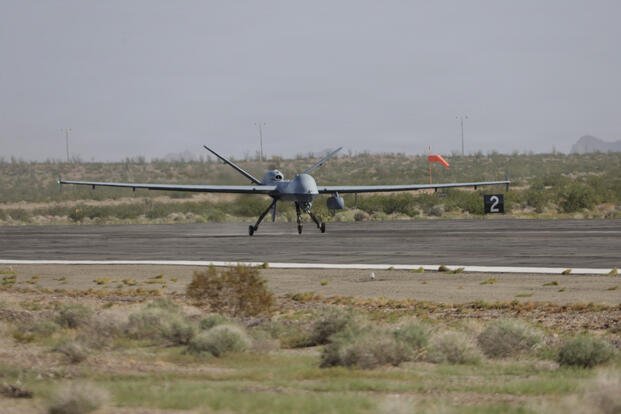US Signals Broader Efforts to Protect Nigeria's Christians Following Trump's Military Threat

WASHINGTON (AP) — President Donald Trump's administration is promoting efforts to work with Nigeria's government to counter violence[1] against Christians, signaling a broader strategy since he ordered preparations for possible military action[2] and warned that the United States could go in “guns-a-blazing” to wipe out Islamic militants.
A State Department official said this past week that plans involve much more than just the potential use of military force, describing an expansive approach that includes diplomatic tools, such as potential sanctions, but also assistance programs and intelligence sharing with the Nigerian government.
Defense Secretary Pete Hegseth also met with Nigeria’s national security adviser to discuss ways to stop the violence, posting photos on social media of the two of them shaking hands and smiling. It contrasted with Trump’s threats this month to stop all assistance to Nigeria[3] if its government “continues to allow the killing of Christians.”
The efforts may support Trump’s pledge to avoid more involvement in foreign conflicts[4] and come as the U.S. security footprint has diminished[5] in Africa, where military partnerships have either been scaled down or canceled[6]. American forces likely would have to be drawn from other parts of the world for any military intervention in Nigeria.
Still, the Republican president has kept up the pressure as Nigeria faced a series of attacks on schools[7] and churches in violence[8] that experts and residents say targets both Christians and Muslims[9].
“I’m really angry about it,” the president said Friday when asked about the new violence on the “Brian Kilmeade Show” on Fox News Radio. He alleged that Nigeria's government has “done nothing” and said “what’s happening in Nigeria is a disgrace.”
The Nigerian government has rejected his claims.
A comprehensive approachFollowing his meeting Thursday with Nigerian national security adviser Mallam Nuhu Ribadu, Hegseth on Friday posted[10] on social media that the Pentagon is “working aggressively with Nigeria to end the persecution of Christians by jihadist terrorists.”
“Hegseth emphasized the need for Nigeria to demonstrate commitment and take both urgent and enduring action to stop violence against Christians and conveyed the Department’s desire to work by, with, and through Nigeria to deter and degrade terrorists that threaten the United States,” the Pentagon said in a statement.
Jonathan Pratt, who leads the State Department's Bureau of African Affairs, told lawmakers Thursday that “possible Department of War engagement” is part of the larger plan, while the issue has been discussed by the National Security Council, an arm of the White House that advises the president on national security and foreign policy.
But Pratt described a wide-ranging approach at a congressional hearing about Trump’s recent designation of Nigeria as “a country of particular concern”[11] over religious freedom, which opens the door for sanctions.
“This would span from security to policing to economic,” he said. “We want to look at all of these tools and have a comprehensive strategy to get the best result possible.”
Nigeria's violence ‘will not be reversed overnight’The violence in Nigeria is far more complex than Trump has portrayed, with militant Islamist groups like Boko Haram killing both Christians and Muslims. At the same time, mainly Muslim herders and mostly Christian farmers have been fighting[12] over land and water. Armed bandits who are motivated more by money than religion also are carrying out abductions for ransom, with schools being a popular target.
In two mass abductions at schools[13] this past week, students were kidnapped from a Catholic school Friday and others taken days earlier from a school[14] in a Muslim-majority town. In a separate attack, gunmen killed two people[15] at a church and abducted several worshippers.
The situation has drawn increasing global attention. Rapper Nicki Minaj spoke at a U.N. event[16] organized by the U.S., saying “no group should ever be persecuted for practicing their religion.”
If the Trump administration did decide to organize an intervention, the departure of U.S. forces from neighboring Niger[17] and their forced eviction from a French base near Chad’s capital[18] last year have left fewer resources in the region.
Options include mobilizing resources from far-flung Djibouti in the Horn of Africa and from smaller, temporary hubs known as cooperative security locations. U.S. forces are operating in those places for specific missions, in conjunction with countries such as Ghana and Senegal, and likely aren’t big enough for an operation in Nigeria.
The region also has become a diplomatic black hole following a series of coups that rocked West Africa, leading military juntas to push out former Western partners. In Mali, senior American officials are now trying to reengage the junta[19].
Even if the U.S. military redirects forces and assets to strike inside Nigeria, some experts question how effective military action would be.
Judd Devermont, a senior adviser of the Africa program for the Center for Strategic and International Studies, said if Trump orders a few performative airstrikes, they would likely fail to degrade the Islamic militants who have been killing Christians and Muslims alike.
“Nigeria’s struggles with insecurity are decades in the making,” said Devermont, who was senior director for African affairs at the National Security Council under Democratic President Joe Biden. “It will not be reversed overnight by an influx of U.S. resources.”
Addressing the violence would require programs such as economic and interfaith partnerships as well as more robust policing, Devermont said, adding that U.S. involvement would require Nigeria’s cooperation.
“This is not a policy of neglect by the Nigerian government — it’s a problem of capacity,” Devermont said. “The federal government does not want to see its citizens being killed by Boko Haram and doesn’t want to see sectarian violence spiral out the way it has.”
US intervention carries riskThe Nigerian government rejected unilateral military intervention but said it welcomes help fighting armed groups.
Boko Haram and its splinter group, Islamic State of West Africa Province, have been waging a devastating Islamist insurgency[20] in the northeastern region and the Lake Chad region, Africa’s largest basin. Militants often crisscross the lake on fast-moving boats, spilling the crisis into border countries like Chad, Cameroon and Niger.
U.S. intervention without coordinating with the Nigerian government would carry enormous danger.
“The consequences are that if the U.S deploys troops on the ground without understanding the context they are in, it poses risks to the troops,” said Malik Samuel, a security researcher at Good Governance Africa.
Nigeria’s own aerial assaults on armed groups have routinely resulted in accidental airstrikes that have killed civilians.
To get targeting right, the governments need a clear picture of the overlapping causes of farmer-herder conflict and banditry in border areas. Misreading the situation could send violence spilling over into neighboring countries, Samuel added.
___
Adetayo reported from Lagos, Nigeria, and Metz from Rabat, Morocco.
© Copyright 2025 Associated Press. All rights reserved. This material may not be published, broadcast, rewritten or redistributed.

